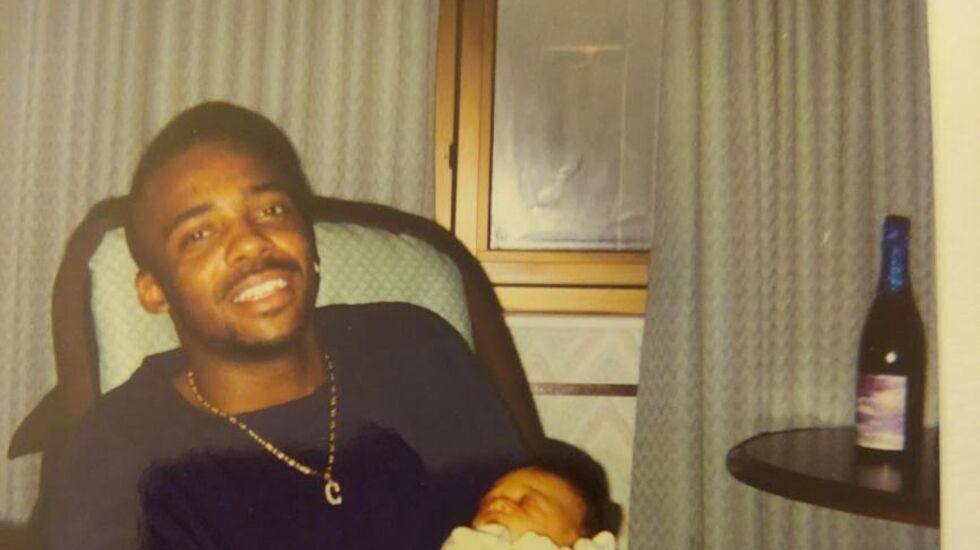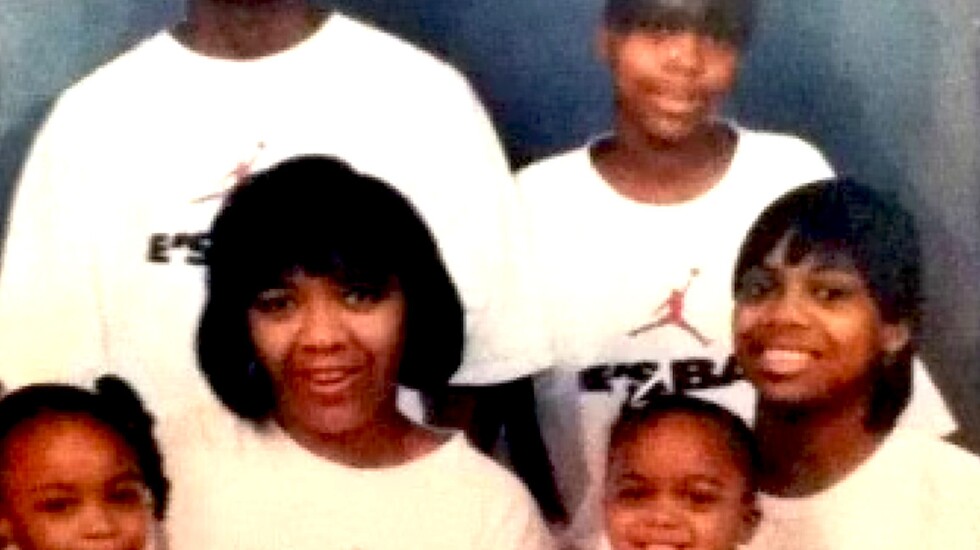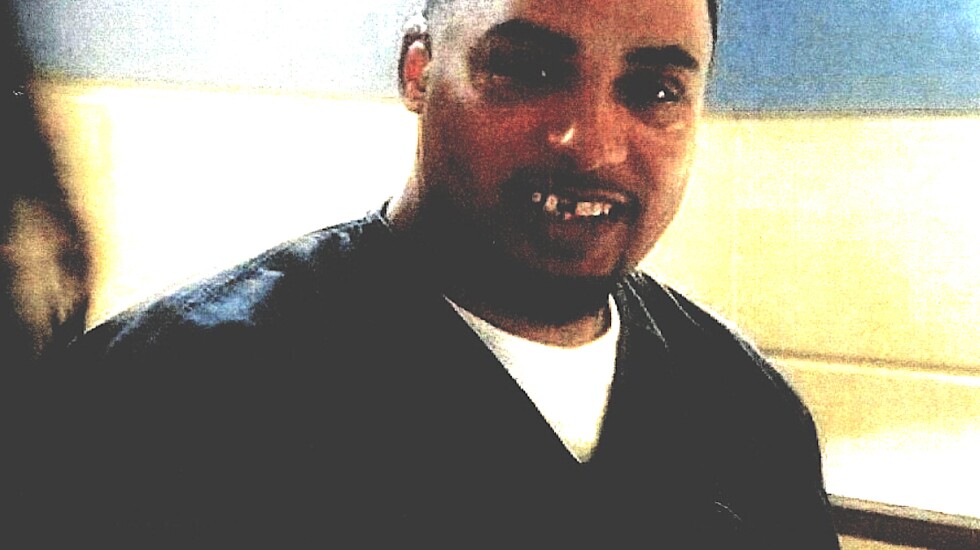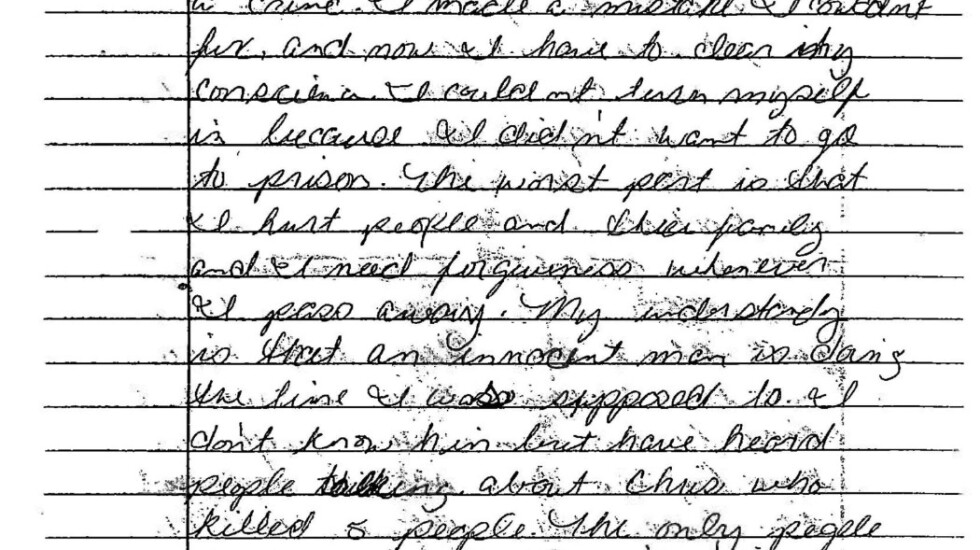
On a winter morning in 2000, police tape surrounded two bloody crime scenes in one of Gary’s toughest neighborhoods.
The bullet-riddled, partially clothed bodies of two women were found in a baseball park.
In a white, frame house not far away, a man and two women, also shot, were dead on the living-room floor.
Cleveland “Christopher” Bynum told police his night started with drinking beer and playing pool at a VFW hall and ended with killing three of the five victims. He later recanted, saying Gary detectives coerced his confession. But he was convicted of all five murders and got a 300-year prison term — 60 years for each victim.
For 23 years, his lawyers have pursued his claim of innocence but lost appeals. Now, they say they’ve amassed a “mountain of evidence” he wasn’t the killer and hope to persuade the courts of that.
“If he went to trial today, he’d be acquitted so fast,” says Nicky Ali Jackson, executive director of Purdue University Northwest’s Center for Justice and Post-Exoneration Assistance in Hammond.

Bernard Carter, the Lake County, Indiana, prosecutor, didn’t respond to a request for comment.
Bynum, 44, was convicted of killing Elizabeth Dailey Ayres, 37, of Portage, Indiana, and Sheila Renee Bartee, 37, Anthony Jeffers, 36, Angela Wallace, 24, and her sister Susan Wallace, 34, all of Gary.
The killings occurred on Feb. 17, 2000.
Jeffers and the Wallace sisters were shot in a home in Gary’s faded Aetna neighborhood. Angela Wallace’s 12-year-old son and her sister’s 18-month-old daughter were unharmed.
The same day, the bodies of Dailey Ayres and Bartee were found in a park.
Bynum says Gary detectives coerced his confession by refusing to let him make a call, denying him a lawyer and threatening to arrest his fiancée and put his child in state custody. He says the police wouldn’t give him food or water or let him use the restroom.
No forensic evidence linked Bynum to the crimes — no gun or fingerprints or DNA evidence.

The only direct evidence against Bynum was a statement by Larry Brooks, Angela Wallace’s 12-year-old son. Detectives said the boy told them he was awakened by five bangs and heard a man he knew as Chris tell someone “put another shell in” and “shoot her in the head.” He said he couldn’t remember Chris’ last name but said it started with a “B.”
But, in 2020, Larry Brooks, now in his 30s, met with one of Bynum’s attorneys and a Lake County prosecutor and in a deposition told them: “I don’t remember saying half this s---.”
Brooks also said a Gary cop told him — before he met with detectives the morning of the killings — Chris Bynum had confessed.
Which wasn’t possible because Bynum wasn’t arrested until the next day.
Brooks’ deposition is among evidence Bynum’s lawyers cite as examples of a bungled investigation that got the wrong guy.
Other evidence of Bynum’s innocence, they say, includes:
- Another confession: Gerald Mathews, who also went by Chris, said in a video recording that he was the killer. “My understanding is that an innocent man is doing the time that I was supposed to,” Mathews said. He was fatally shot in 2014 but had arranged for his recording to be turned over to authorities after his death. Indiana courts have found Mathews’ confession wasn’t credible because releasing it only after his death ensured he didn’t face any consequences.


- Two DNA hits: Tests in 2017 excluded Bynum from DNA recovered from the victims but showed a link to a late Gary police officer’s son. The tests also showed a link between one of the victims and an unidentified person whose DNA profile was recovered from the door of a 2010 murder scene in nearby Lake Station, Indiana.
- Questions over trial defense: In 2009, the federal appeals court in Chicago ruled that Bynum’s trial lawyer provided ineffective assistance because he failed to put Bynum on the witness stand to testify his confession was coerced. The court calledd the evidence against Bynum “skimpy.” But it upheld his conviction, saying it was unlikely Bynum’s confession would have been thrown out even if he’d tesified.
- Questions about witnesses: They include a woman who said Rob Carr and another man showed up at her home covered in blood and that Carr burned his clothes in a barbecue and said he was with the other man, who killed all five people. Carr later died in a car accident.
- Detective accused of misconduct: A murder charge was dropped in 2002 against a woman who stabbed her husband to death. She said in a lawsuit that Gary detectives — including one who interrogated Bynum — ignored evidence supporting her self-defense claim. The city of Gary settled the lawsuit.
At the heart of the case against Bynum were the statements he gave police.
In the first, Bynum told them, “I didn’t have nothing to do with it.” He admitted he was at the house when the three victims were shot but gave detectives the name of a man he said was responsible for the killings. Later, that man and another man killed the women in the park, Bynum said.
Bynum’s lawyers say he was removed from his holding cell and confronted by one of those men — a “known killer in the community” and a “hit man.” The lawyers say Bynum changed his story to protect himself.

In his second statement, Bynum told detectives he played pool and drank beer at a VFW hall with one of the two men he named in the first interrogation. He said that, afterward, he was in a car with that man when they spotted Jeffers — one of the murder victims — outside his home.
Bynum said he got into an argument with Jeffers because he heard Jeffers was telling people he was a drug dealer.
Later, he said, Jeffers drove up to Bynum in a car with two women — Dailey Ayres and Bartee. Bynum handed Jeffers a gun, and they all drove to the ballfield, where Jeffers shot the women, according to the statement.
Bynum said he and Jeffers went to Jeffers’ house and got into a “tussle” because Bynum said he wouldn’t take the blame for the killings.
Bynum said he thought Jeffers was trying to take his gun, which went off and killed Jeffers. Angela Wallace and her sister Susan started to approach him, he said, and he panicked, shooting them.
Jackson, a criminal justice professor at Purdue University Northwest, says there’s good reason Bynum’s contradictory stories are hard to follow: He made them up.
“This case was as sloppy as it gets,” Jackson says.
The police didn’t check phone records, look for surveillance videos or test DNA evidence recovered from the women in the park, she says.

Michael Ausbrook, a lawyer who runs an Indiana University center specializing in post-conviction appeals, says “there are things we are still pursuing before we take that last shot” — asking the appeals court in Chicago for a full review of the evidence, hoping to win a new trial.
“Just with the DNA evidence and the Mathews confession, I don’t think there’s any chance he would be convicted,” Ausbrook says.







